When it comes to cats, they are often easily identified by their tails. Maine Coons are known for their super fluffy tails, and Siamese cats are known for those long, sinewy tails of theirs, too. But what about cat breeds that don’t have tails?
You might easily know the first one on this list, but there are actually several cat breeds without tails.
And it’s important to note that all of the tailless cat breeds in existence have tails that are not present due to naturally-occurring genetic mutations. Keep reading to discover seven tailless cat breeds you may not have known about…
#1 Manx
Manx cats are tailless, but there are four distinct variations when it comes to Manx cat tails.
The Manx cat hails from the Isle of Man in the UK, and it’s beloved by many cat lovers across the globe. Manx cats are tailless, but there are four distinct variations when it comes to Manx cat tails.
VCA Hospitals shares that: Tail types range from rumpy (no standing vertebrae) to rumpy riser (short, visible tail) (short bump), stumpy (short tail), longy (normal length tail with blunt end) to full tail (full plume tail).
Manx cats are known for their gregarious dog-like nature and love of people. And, if you’ve ever had the pleasure of keeping one in your life, then you can certainly attest to that! Sadly, Manx cats are prone to the development of Manx Syndrome and Spina Bifida, but for those Manx cats which are healthy, their lack of tail doesn’t seem to affect their balance whatsoever.
Want to learn a fun little cat trivia fact about Manx cats? It’s been rumored that a Manx cat was aboard Noah’s Ark and that their missing tail occurred as a result of Noah accidentally shutting a door on it.
#2 Cymric
This adorable round-faced tailless cat breed is technically a long-haired Manx cat. Image Courtesy of VetStreet
This adorable round-faced tailless cat breed is technically a long-haired Manx cat. They have a unique gait which makes them appear like a ball when they run around your home.
These playful felines have a long double coat which is thick and dense and requires routine brushing.
The Manx cat is easily recognized for their round appearance, and with all that glorious fluff on the Cymric, their roundness is even more pronounced. These round kitties have round pupils, heads, and even roundness around their whisker pads—and don’t forget that precious little round rump of theirs. It’s almost like their purrfect little bunny cats!
#3 Pixie Bob
Like their wild cat cousins, this domesticated tailless cat breed has a bob-shaped tail (which easily explains their breed name).
The Pixie Bob cat breed might look a little wild in appearance, but despite this bobcat look, they do not possess any wild cat DNA to speak of. Like their wild cat cousins, this domesticated tailless cat breed has a bob-shaped tail (which easily explains their breed name).
What’s even cooler about these large and in charge felines is that many purebred Pixie Bob cats will have Lynx-like tufts on their ears and “mutton chop” fluff around their cheeks. For Pixie Bob cats that are shown in cat shows, it’s required that their tails measure anywhere from 2-4″ in length from base to tip.
#4 Japanese Bobtail
For this tailless cat breed on our list, their tail is unique in shape as it appears more like a rabbit tail than a cat’s shortened tail.
The Japanese Bobtail cat is a rare and petite feline that’s playful, has a love of water, and is easily recognizable by cat connoisseurs. These cute and often calico and odd-eyed kitties can come in both long hair and short hair, and both are equally as cute and tailless.
For this tailless cat breed on our list, their tail is unique in shape as it appears more like a rabbit tail than a cat’s shortened tail.
A fun little fact about Japanese Bobtail cats: in the 1600’s monks employed these skilled hunters to catch vermin so that they could protect and preserve their precious silkworm barns.
#5 American Bobtail cat
They’re not actually related to the wild bobcat, but their physical similarities are undeniable.
Defined as a relatively uncommon cat breed, American Bobtail cats definitely possess a wild appearance despite them only having house cat DNA. Their larger frame and naturally bobbed tail are standouts in the cat looks department, and they even have longer back legs which make them look even cooler.
Match these unique features with their charming personalities, and you have yourself a tailless cat breed that can easily make your BFF for all their nine lives. What’s even more impressive about this tailless cat breed is their origin story.
Legend has it that the breed originated when a short-tailed male brown tabby cat named Yodie was discovered at an Arizona motel. Allegedly, the tailless cat who went on to become the founding father of the breed was dumped there by a child from a nearby Indian reservation.
#6 Kurilian Bobtail cat
Their tails can range from ultra-short to short, and no two tails will ever be identical when it comes to the Kurilian Bobtail cat.
The Kurilian Bobtail originates from Russia, and it’s known for its wild cat look and absolutely adorable “pom pom” tail. This naturally occurring tailless cat breed comes from the Kurilia Islands of Russia, hence their name; it’s also believed that they are native to Russia’s Kamchatka Peninsula and Sakhalin Island.
For the Kurilian Bobtail they’re energetic and playful and make for delightful cats to keep in your home. Their tails can range from ultra-short to short, and no two tails will ever be identical when it comes to the Kurilian Bobtail cat.
Want to learn an interesting fact about the Kurilian Bobtail cat? It’s been said that these cats are excellent swimmers, and they can thank that to their large frame, Island origins, and long back legs!
#7 Highlander Cat
Breed Overview
- ORIGIN: East Coast of the United States
- HEIGHT: 14″- 16″
- ADULT WEIGHT: 15-20 pounds
- LIFE SPAN: 10- 15 years
The Highlander cat, which is also sometimes referred to as the Highlander Lynx, is very unique in appearance. These cats have ears that curl backward, can come in either long or short coats, and almost all Highlander cats will have shortened tails.
This relatively new and rare breed of feline originated in 1993 when breeder Joe Childers crossed a Jungle Curl cat with a Desert Lynx. For this tailless cat breed, sometimes kittens born in this breed can actually have long tails and straight ears.
These cats are large and known by many as the gentle giants of the cat world, with some male cats of the breed tipping the scales at 20 lbs. And when it comes to this tailless cat breed on our list, oftentimes, they’re polydactyl cats!
Now that you’ve learned all about cat breeds with no tails check out this next article here on Cats.com to discover cat breeds with the coolest stripes.
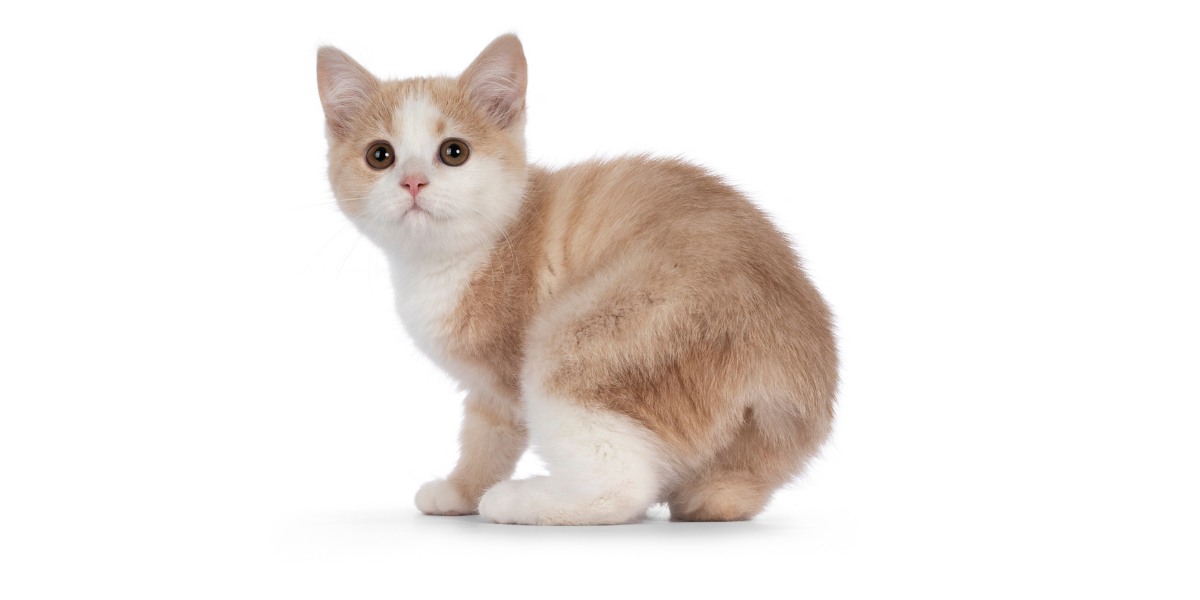
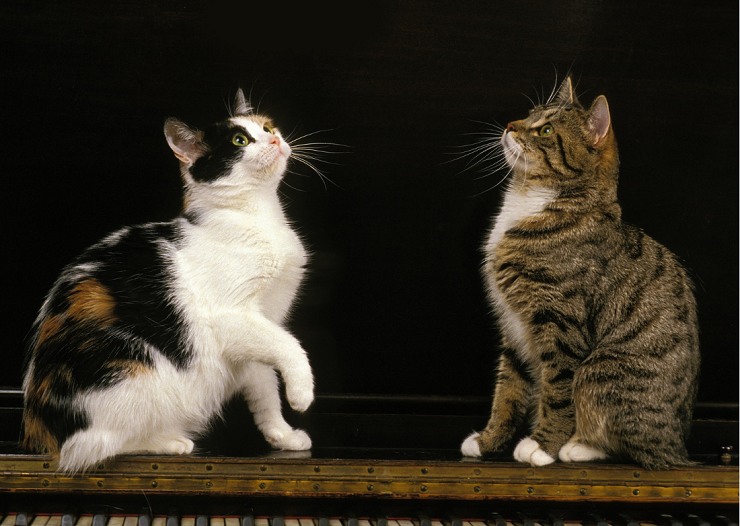
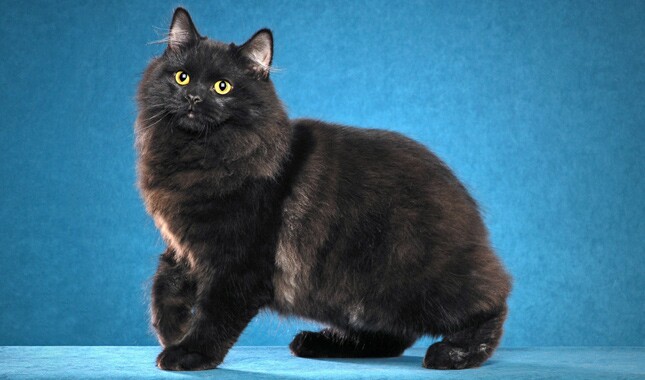
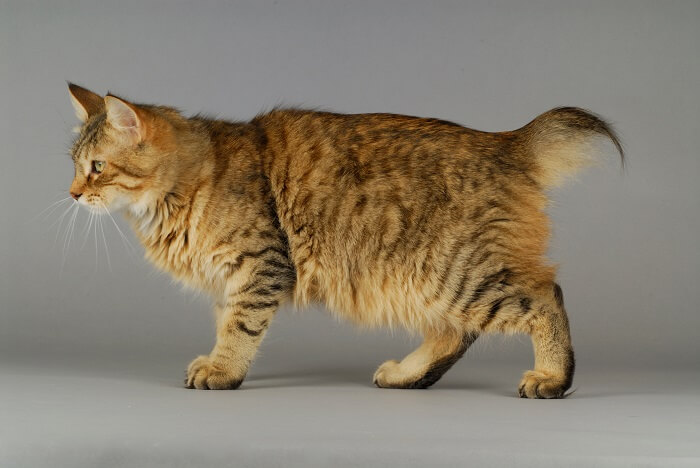
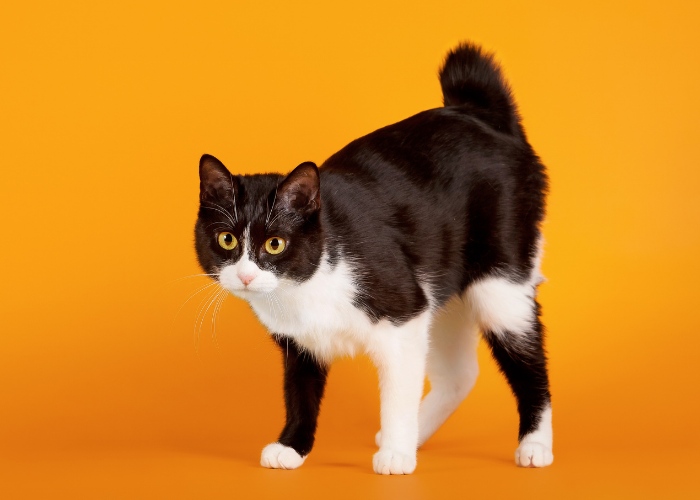
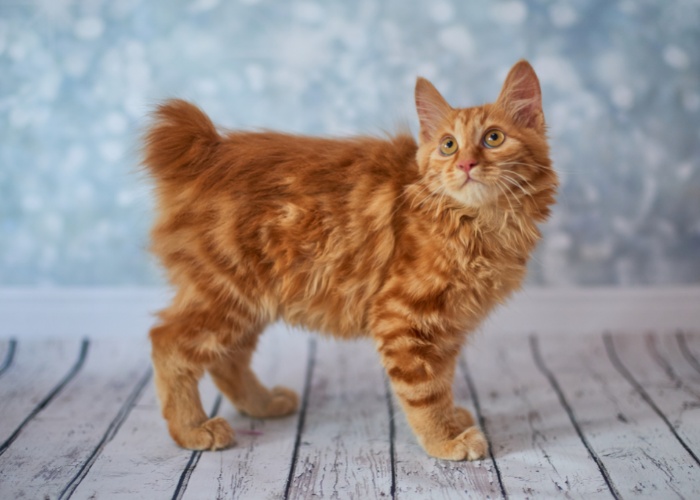
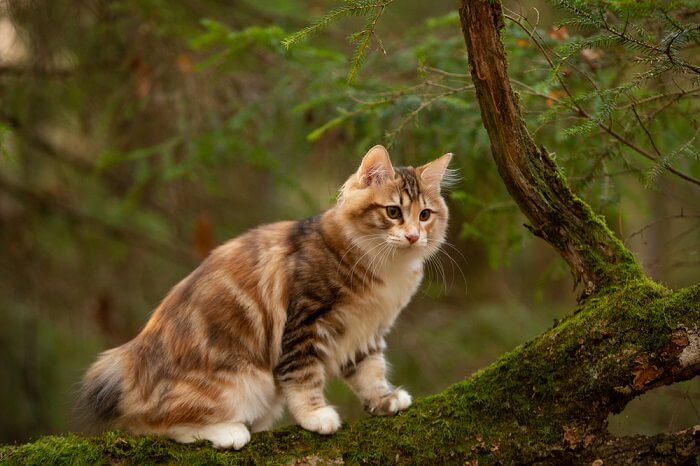
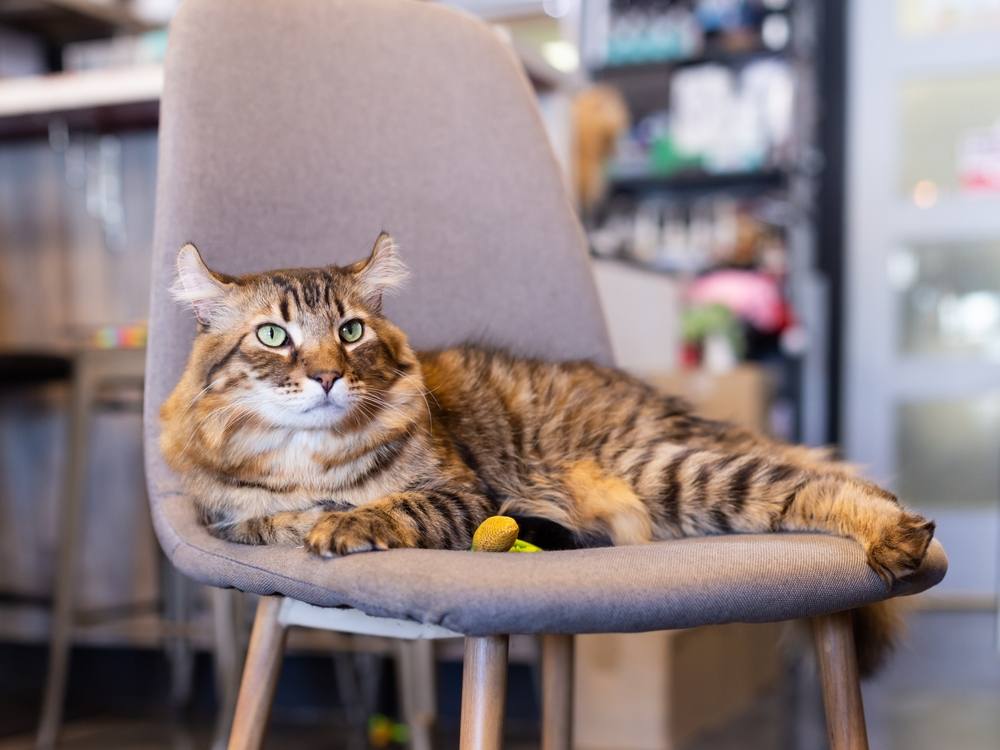

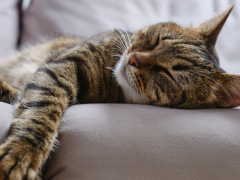
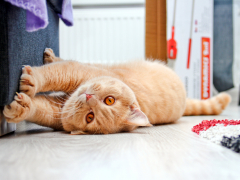

I was interested in the kitty with no tail in the first photo. I have had cats, Kittens, Dogs and puppies. I am wanting a new Family memmber cause a few of my other Cats have passed.
Please, for the 4th time, I want to adopt a cat from you. Not my first rodeo, just want to add to my Family, a playmate for my one and only cat. The cat I picked was the first photo but that didn’t do anything when I clicked on it.
Marsha, this is an informative article—it does not list cats available for sale or adoption. You’ll have to find a breeder in your local area instead.
I want to adopted a fur baby from you a Kitty, cat a Minx if you have one. I like the kitty in the first photo.
Hello Marsha, we don’t breed or adopt out cats—I’d recommend searching for “Manx cats in my area” using Google. Wishing you all the best!
What was the breed of the kitten that you used for the cover of the article
I’m afraid I’m not 100% sure, but the cat looks most like a Manx to me!